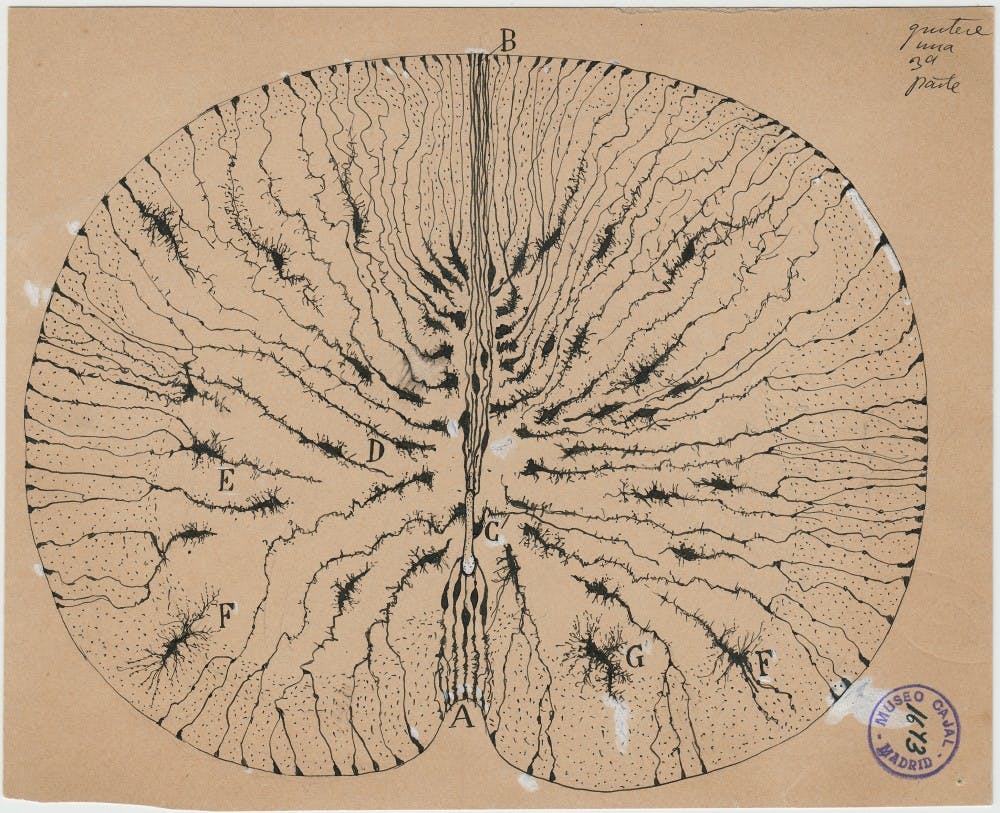The Ackland Art Museum is showcasing famous neuroscientist and pathologist Santiago Ramón y Cajal’s drawings of the human brain Jan. 25 - April 7 in a new exhibit called "The Beautiful Brain: The Drawings of Santiago Ramón y Cajal." The exhibit will display 80 of his most revolutionary drawings, many of which have never been seen before in the U.S.
Many neuroscientists know Ramón y Cajal as the father of modern neuroscience with his discovery that individual cells called neurons make up the brain.
In his lifetime, Ramón y Cajal drew over 3,000 depictions of brains and neurons. Ramón y Cajal’s drawings are visually appealing as well as scientifically impressive in how they illustrate the complicated structure of the human brain.
Because of his groundbreaking work in neuroscience, he received the Nobel Prize in Physiology/Medicine in 1906. His work and many drawings of the human brain still influence contemporary research on diseases such as Parkinson’s and Alzheimer’s, making it as relevant today as it was a century ago.
“Even to this day, when neuroscientists give talks, quite often people will include images from Ramón y Cajal in their presentations because of how beautiful those images are,” said Mark Zylka, director of UNC Neuroscience Center. “Essentially what we know about the nervous system now is built entirely upon what Ramón y Cajal discovered back at the turn of the last century.”
Peter Nisbet, deputy director for curatorial affairs at the Ackland Art Museum, said the exhibit has been authorized by the Cajal Institute in Madrid, Spain to travel to select cities in North America. The Ackland is one of only five locations displaying the drawings and the only place to see the exhibit in the American South.
The Ackland also saw this exhibit as a chance for collaboration between the science departments at UNC and the arts. Nisbet said he wanted the exhibit to not just include Ramón y Cajal’s drawings, but also include the work of contemporary neuroscientists across the globe and the UNC Neuroscience Center staff.
This exhibit is also transcending the borders of the museum itself.
“This semester, a range of UNC classes are integrating the "The Beautiful Brain" into their coursework, from journalism to neuroscience to literature and beyond,” said Elizabeth Manekin, the Ackland’s head of University programs and academic projects. “The conversation is about the beauty of his drawings, but also about how his creativity and imagination advanced scientific discovery.”



